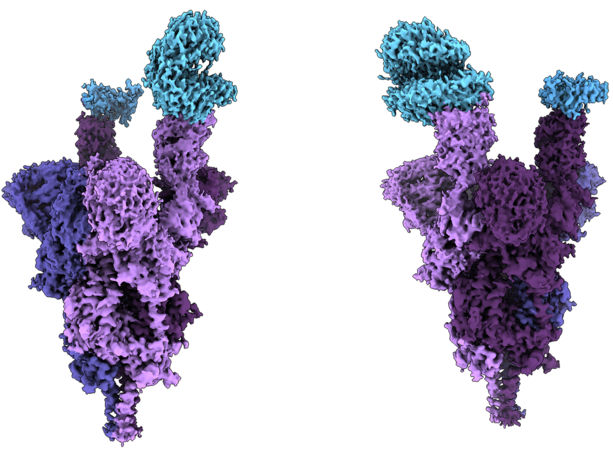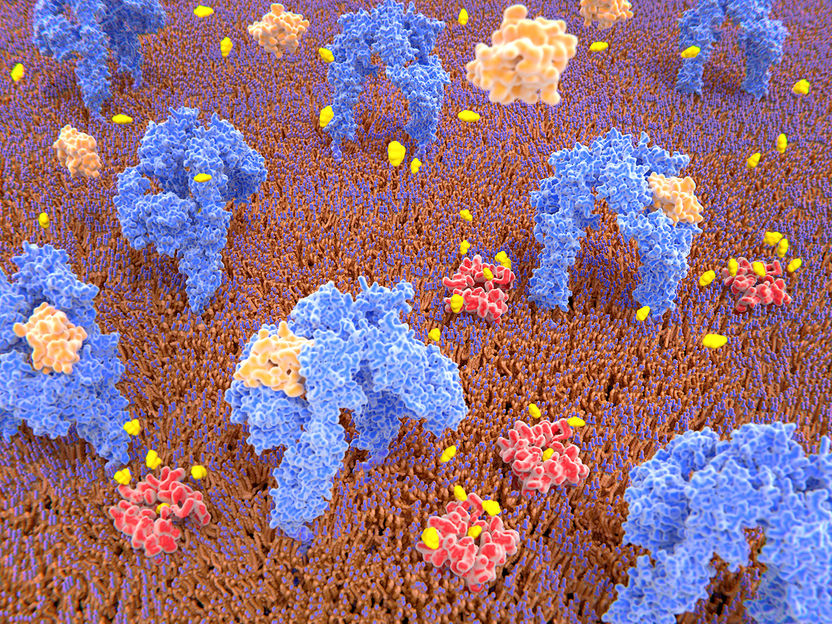Blood Testing for so-called MicroRNAs Can Detect Dementia
German-American research team highlights new diagnostic option for Alzheimer’s
dementia due to Alzheimer’s disease and its preliminary stage can be detected by measuring so-called microRNAs in blood. Researchers from DZNE in Göttingen, together with US experts from Boston University and the Indiana University School of Medicine, report on this in the scientific journal Alzheimer’s & Dementia: The Journal of the Alzheimer’s Association. Their assessment is based on data from around 800 adults participating in a long-term study on Alzheimer’s. Although the method used is not yet ready for clinical routine, these findings could pave the way for better early diagnosis.
Alzheimer’s is a brain disease for which there is currently no cure and that progresses over time into dementia. Diagnosis is usually based on neuropsychological assessments that test memory and other mental abilities, ideally supplemented by brain and spinal fluid examinations if abnormalities are detected. Now, the current findings by the German-American collaboration show the potential for a novel blood test.
Need for early diagnosis
“We not only need better therapies for Alzheimer’s disease, but also new approaches to recognize the disease – and to do so at an early stage, when symptoms of dementia, such as memory disorders, do not yet occur but the disease is already developing in secrecy,” says André Fischer, a research group leader at DZNE’s Göttingen site and a professor of epigenetics of neurodegenerative diseases at University Medical Center Göttingen (UMG). “We have found that this is feasible by measuring microRNAs in the blood. Previous results already suggested this, but now we have been able to confirm them in a large study collective. In particular, our research shows that microRNAs can be used not only to detect Alzheimer’s dementia, but also to identify individuals who are only mildly cognitively impaired but at high risk of actually developing dementia within the next two years.”
Molecules with a control function
MicroRNAs are molecules with a regulatory impact: They influence the production of proteins and thus central processes of the metabolism. “We are already working on a simplified test method to enable the measurement of microRNAs also in clinical practice. Such a blood test would be a useful complement to existing diagnostic methods,” says Fischer. “The human body produces thousands of different microRNAs. We have found that certain ones, just about 20, are crucial for our purposes. Using machine learning, that is, artificial intelligence, we generated a kind of molecular fingerprint from the overall pattern of their concentrations. Based on this signature, we were able to identify people with Alzheimer’s dementia and also people at high risk.”
International collaboration
The current results are based on data from adults in the United States and Canada enrolled in the Alzheimer’s Disease Neuroimaging Initiative (ADNI). ADNI has been running for 20 years and is one of the world’s largest long-term studies on Alzheimer’s disease. Participants are examined regularly over the years and blood samples are also stored for later research. “A wealth of data has been collected over time. However, microRNAs had not been measured so far. That is why colleagues from the US approached us because we have the necessary technology and expertise at DZNE. The National Institutes of Health supported the project,” says Fischer. “We then matched existing diagnoses from ADNI with the microRNA signatures we had identified. This revealed that the microRNAs are suitable for diagnosing and early detection of dementia.”
Correlation with conventional measures
MicroRNAs were also found to reflect abnormalities in established biomarkers of Alzheimer's disease. Specifically, this applies to the loss of brain volume and to the levels of so-called amyloid and tau proteins. “This shows that a comparatively simple blood test for microRNAs has similar informative value to conventional biomarkers, which have to be determined in a laborious way using brain scans and analyses of spinal fluid. Such a blood test could help to prevent expensive and often unpleasant examinations,” says Fischer.
Growing interest in RNA
MicroRNAs belong to the large family of “non-coding” RNAs. The blueprints for these molecules are stored in the genome, but they are not used to make proteins. “In fact, about 70 percent of human DNA is converted into non-coding RNAs. For a long time, these RNAs were thought to be of little importance. It has since been recognized that they influence metabolism in a variety of ways. In pharmaceutical research, they are now seen as potential drug targets,” says Fischer. “In addition to the current studies with our partners in the U.S., we are therefore also investigating such RNAs in laboratory studies to elucidate their modes of action. And we also studying them in the context of dementia studies conducted by DZNE and in population studies looking at the health of the general population. This is a topic that is likely to keep us busy.”
Original publication
Dennis M. Krüger, Tonatiuh Pena‐Centeno, Shiwei Liu, Tamina Park, Lalit Kaurani, Ranjit Pradhan, Yen‐Ning Huang, Shannon L. Risacher, Susanne Burkhardt, ...Jan Krzysztof Blusztajn, Andrew J. Saykin, Ivana Delalle, Kwangsik Nho, Andre Fischer; "The plasma miRNAome in ADNI: Signatures to aid the detection of at‐risk individuals"; Alzheimer's & Dementia, 2024-9-18
Shiwei Liu, Tamina Park, Dennis M. Krüger, Tonatiuh Pena‐Centeno, Susanne Burkhardt, Anna‐Lena Schutz, Yen‐Ning Huang, Thea Rosewood, Soumilee Chaudhuri, ... Andrew J. Saykin, Ivana Delalle, Andre Fischer, Kwangsik Nho ; "Plasma miRNAs across the Alzheimer's disease continuum: Relationship to central biomarkers"; Alzheimer's & Dementia, 2024-9-18

























































